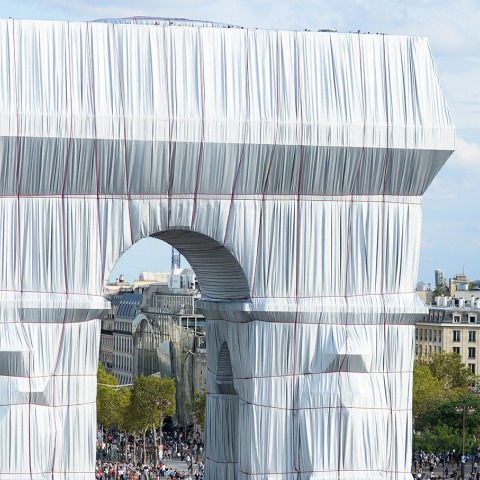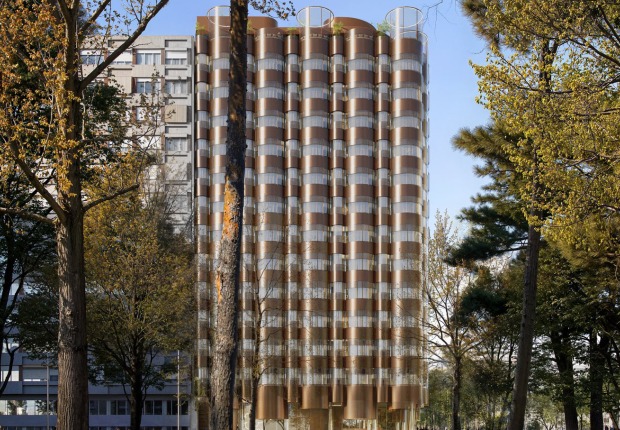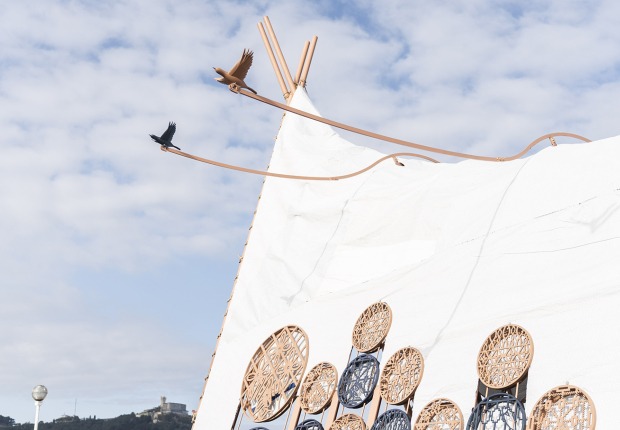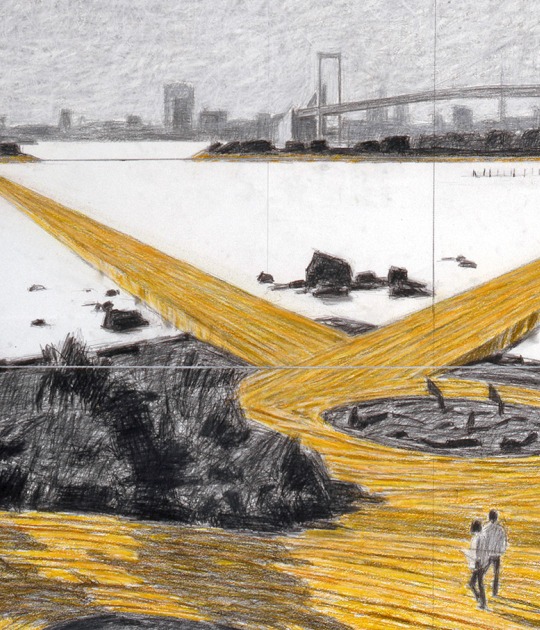Christo Vladimirov Javacheff, the primary artist, was born on June 13, 1935 (81 years old) in Gabrovo, Bulgaria. His father, Vladimir Javacheff, was a scientist, and his mother, Tsveta Dimitrova, was secretary of the Academy of Fine Arts in Sofia. The artists of the Academy who visited his family observed Christo's artistic talent at an early age.
By his father, Christo is a descendant of a German immigrant in Bulgaria. Christo's great-grandfather, the German Friedrich Fischer, had invented a modern system for mass production of bearings. Fischer sent his son-the grandfather of Christo, Vitus Fischer- to Bulgaria to inaugurate the first bearing factory in Eastern Europe. After the collapse of the project (14 Bulgarian workers died in an accident at the factory) and seeing that the local police looked askance, Vitus Fischer changed its identity to that of Dmitri Javacheff, name of one of the workers who died in the accident. With its new identification, Vitus was reincorporated into society as an ordinary Bulgarian and started working on a milk production business. Dmitri's grandson, Vladimir Javacheff, showed the technological skills of his grandfather and became an academically successful scientist in Bulgaria, although it was still poor.
Christo realized its German origins in the early 1970s and, after a brief trial in the courts of the then West Germany, was compensated with 49% of the assets of Friedrich Fischer. Although this would Christo a millionaire, he decided to live modestly in a part of what produced his artistic work, donating most of his income and his inheritance to charity.
In his youth, Christo became interested in theater and in the works of Shakespeare. In 1953, he was admitted to the Academy of Fine Arts, but became disillusioned strict curriculum imposed by the Bulgarian Socialist Party at the time. He studied art at the Academy of Sofia from 1952 to 1956 and another year in Prague, Czechoslovakia. In 1957, Christo fled the socialist state hiding in a truck transporting medicine to Austria.
Christo quickly settled in Vienna and enrolled at the Vienna Academy of Fine Arts. After only one semester there, he traveled to Geneva and then moved to Paris. Because the trip, citizenship lost and became a stateless person. His life in Paris was marked by economic deprivation and social isolation, which was increased by his difficulty in learning the French language. He earned money by painting portraits, which compared with prostitution. By visiting the galleries and museums of the city, he was inspired by the work of Joan Miró, Nicholas de Stael, Jackson Pollock, Jean Tinguely and mainly in Jean Dubuffet.
In January 1958, Christo made his first piece of "art wrapped" covered an empty paint jar with a cloth soaked in acrylic. He tied and colored with glue, sand and car paint. A German entrepreneur named Dieter Rosenkranz bought several small "wrapped" works by Christo. It was through Rosenkranz that Christo met artist Yves Klein French and art historian Pierre Restany.
Christo and his late wife Jeanne-Claude (born 1935 in Casablanca, Morocco, died 2009, New York City, USA) are among the world's most celebrated artists. The artists began their collaboration in 1961. Their large-scale projects include Wrapped Coast, Australia, 1968–69; Valley Curtain, Rifle, Colorado, 1970–72; Running Fence, Sonoma and Marin Counties, Cal ifornia, 1972–76; Surrounded Islands, Biscayne Bay, Florida, 1980–83; The Pont Neuf Wrapped, Paris, 1975–85; The Umbrellas, Japan–USA, 1984–91; Wrapped Reichstag, Berlin, 1971–95; Wrapped Trees, Riehen, Switzerland, 1997–98; The Gates, Central Park, New Yo rk City, 1979–2005; and The Floating Piers, Lake Iseo, Italy, 2014–16. Their work is represented in museums and galleries throughout the globe including the Guggenheim and Metropolitan museums in New York, the Tate in London and the Pompidou Centre in Paris.

































